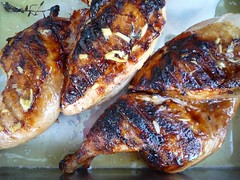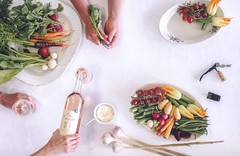Minnesota nice!, pt. 1
We had a feeling Minnesota was going to be nice, but we weren't quite prepared for just how lovely it all was: from the people, to the attractions, to the scenery.
 fig. a: sublime
fig. a: sublime
We touched down in Minneapolis and soon got ourselves acquainted with the "City of Lakes." It really wasn't all that difficult to get our bearings, what with the River and the Grid there to help us.
 fig. b: Mississippi by Faribault
fig. b: Mississippi by Faribault
Minneapolis is definitely a breakfast town, all four of our party of Montrealers are breakfast people, and we were only going to be in town for a very brief period of time, so we came roaring out of the gate and immediately hit one of the legends of the local scene: Al's Breakfast.
Al's is situated in a structure that represents American diner vernacular at its finest. The counter seats about 15 people, and the queue forms right behind them--until it spills out onto the street, of course. The structure is literally a converted alleyway: a make-shift roof was assembled over an alley next to a hardware store to transform it into a shed to house additional goods; this space was then rented out and renovated; by the time Al Bergstrom took possession in 1950, it had been operating as a hamburger stand. The rest is history, but one thing's for sure: it's a setting befitting the Dinkytown address.
 fig. c: Al's Breakfast*
fig. c: Al's Breakfast*
Al's serves an impressive number of breakfast combos, alongside some remarkably tasty diner coffee (served in "bottomless" cups, of course), but one of the things they're most famous for is a dish that's a local obsession: hash browns. I say a "dish" because although hash browns in Minneapolis are often served the standard way--as an accompaniment to eggs, or a side order--they're also served in a variety of other ways: topped or mixed in all kinds of inventive ways.
Al's was friendly, and had character to spare--they also had a very unique way of getting parties of three or more to be seated together (by orchestrating an elaborate form of musical stools), and an unusual way to placing orders (they didn't call them out; the short-order cook would walk the line to eyeball the orders and commit them to memory). But it wouldn't have meant quite as much if their breakfasts hadn't been outstanding--which they were.
I had my hash browns "straight up"--as an accompaniment to their summer scramble with tomatoes, basil, and mozzarella--but they were fantastic: crispy, cooked through, and actually fully flavoured. Definitely not the bland, undercooked dreck that passes for hash browns in so many breakfast joints across North America.
After breakfast, we took a stroll through the campus of the University of Minnesota to visit the University Archives with a friend of mine who's a curator there. (She's also a long-time Al's aficionado, and was kind enough to curate our visit there, too.) We visited their vaults deep underground, which contain the world's largest collection of Sherlockiana, among many other wondrous things.
 fig. d: Sherlockiana
fig. d: Sherlockiana
And, afterwards, we made our way over to the University's Weisman Art Museum to inspect the mysteries of their permanent collection and generally take in the scene.
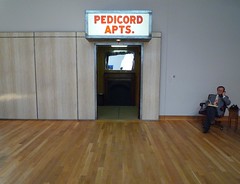
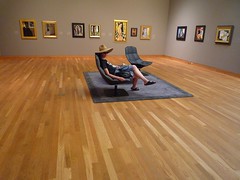 fig. e: lounging
fig. e: lounging
While we were at the Weisman, we also caught a fantastic exhibit of O. Winston Link's photographs of trains, train stations, and train communities along the Norfolk & Western Railway, the last of the steam-engine lines in America.

 fig. e: training days
fig. e: training days
That night, after a cycle tour of Minneapolis' impressive array of lakes (it is the "City of Lakes," after all), some shopping, some noshing (Midtown Global Market!), and some downtime at our B & B, we headed back across the mighty Mississippi and settled in at Nye's Polonaise Room for dinner and drinks.
1950 appears to have been a particularly momentous year in the history of Minneapolis: not only was it the birth year of Al's Breakfast, it was also the year Nye's came into being. But whereas Al's is the humblest of restaurants, more or less squatting a Dinkytown alleyway, Nye's occupies an entire city block, and it does so proudly.
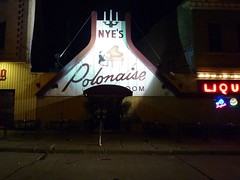 fig. f: Nye's Polonaise
fig. f: Nye's Polonaise
Once named The Best Bar in America by no less an authority than Esquire, Nye's actually consists of three connected establishments: Nye's Bar (which features raucous musical acts nightly, including The World's Most Dangerous Polka Band), Nye's Chopin Dining Room (a banquet hall), and Nye's Polonaise, the heart and soul of the operation.
In spite of its name, the Polish fare at Nye's Polonaise isn't going to win any prizes for continental cuisine, but it is a throwback to a time when a night on the town might very well include a trip to an Eastern European "fine dining" establishment/Cocktail Lounge/Piano Bar, and when restaurants didn't have any qualms about encouraging each and every patron to "eat, drink, and loosen your belt!"
And the experience is priceless--from the old-school service and the Truman-era martinis (vodka, of course), to the gargantuan platters and the classic wedge salads, to the drunken sing-alongs at the piano bar and the portrait of Chopin (their patron saint) that proudly adorns the wall behind it, announcing to all who enter, "This place has class!"
None of us had the necessary credentials to weigh in on whether it's still the Best Bar in America (or ever was), but we loved Nye's Polonaise all the same.
When we looked back on it later that night, we were downright flattered that the songstress at the piano correctly identified us as out-of-towners within seconds of our stepping onto the premises, and promptly started heckling us. We were a little disappointed that she had us pegged for Americans--from Long Island, no less--but she was serenading five or six people at the bar at the time, so maybe we didn't have her full attention.
Then again, maybe she sensed something: the plates on our rental car did read "New Jersey."
Minnesota addresses (part one):
Al's Breakfast, 413 14th Avenue SE, Minneapolis, MN, (612) 331-9991
Weisman Art Museum, 333 East River Road, Minneapolis, MN, (612) 625-9494
Midtown Global Market, 920 East Lake Street, Minneapolis, MN
Nye's Polonaise, 112 East Hennepin Avenue, Minneapolis, MN, (612) 379-2021
aj
* photograph courtesy of Mark Slutsky Photography.

